San Antonio has seen legendary music venues come and go over the years. Some held such iconic shows that we still talk about them today. Who can forget the Sex Pistols' infamous show at Randy's Rodeo, for example, or when a young and hungry Metallica sold out four nights at the Cameo Theater?
Some bygone venues got a second life, like Municipal Auditorium, which was transformed into the Tobin Center, or White Rabbit, whose building now houses Paper Tiger. But others simply evaporated into the ether, leaving us only with memories.
This list of some of San Antonio's most revered music venues of the past certainly hits the highlights, but many fans would agree that it barely scratches the surface when it comes to all the beloved performance spots that have come and gone.
20 San Antonio music venues that are gone and sorely missed
By San Antonio Current Staff on Fri, Jun 21, 2024 at 4:18 pm
Tags:
- San Antonio,
- taco land,
- keyhole club,
- lermas,
- municipal auditorium,
- Phazez,
- Sneakers,
- Randy's Rodeo,
- cameo theater,
- The Landing jazz club,
- raw power & light,
- Salute,
- the bone club,
- la botanica,
- teen canteen,
- farmers daughter,
- showcase special events center,
- villa fontana,
- white rabbit,
- paper tiger,
- tobin center,
- Casbeers,
- Eastwood Country Club
Scroll down to view images
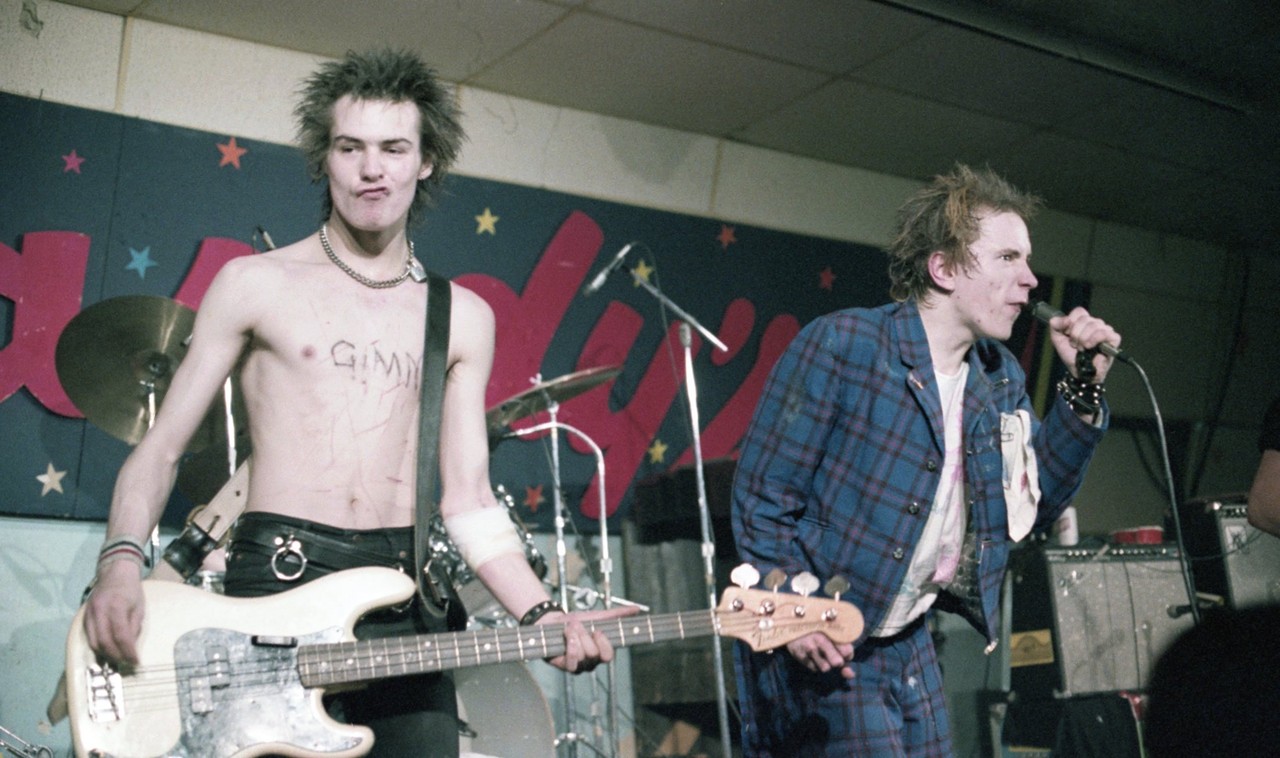
Photograph copyright 1978, Lindell “Tiger” Tate
Randy’s Rodeo
Once a country-focused dance hall, this venue hosted the Ramones, Rush, L7, the Beastie Boys and Patti Smith in addition to an infamous 1978 Sex Pistols gig. Now its hosts bingo nights as Randy’s Bingo. KISS-FM DJs Joe Anthony and Lou Roney built an extension onto Randy's stage during the ’70s after booking Canadian prog-rock band Rush and realizing all of the equipment wouldn’t fit. For many, the Sex Pistols' gig (pictured) remains Randy's most legendary.
Once a country-focused dance hall, this venue hosted the Ramones, Rush, L7, the Beastie Boys and Patti Smith in addition to an infamous 1978 Sex Pistols gig. Now its hosts bingo nights as Randy’s Bingo. KISS-FM DJs Joe Anthony and Lou Roney built an extension onto Randy's stage during the ’70s after booking Canadian prog-rock band Rush and realizing all of the equipment wouldn’t fit. For many, the Sex Pistols' gig (pictured) remains Randy's most legendary.
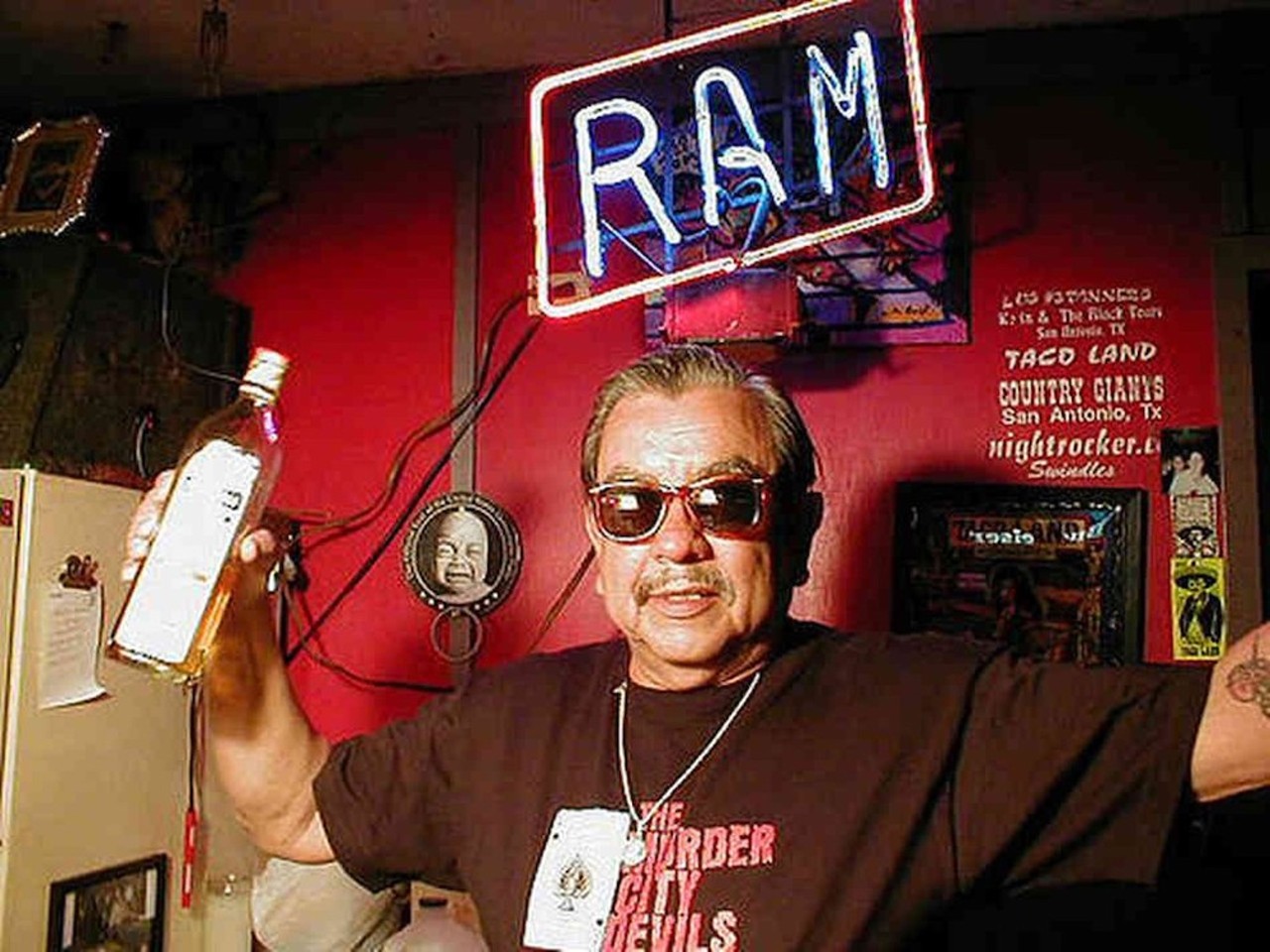
Courtesy Photo / Erik Sanden
Taco Land
A squat, ramshackle venue located across from the Pearl Brewery, Taco Land evolved from a neighborhood bar and taco joint into one of the state's longest-running underground music clubs. Although opened in 1965, music didn't become a fixture until gruff but hilarious owner Ramiro "Ram" Ayala allowed punk rockers to begin staging shows in the early '80s. After Ayala's tragic death in a 2005 robbery, Taco Land closed. The building is now a Velvet Taco location but features a mosaic on its exterior memorializing the colorful bar owner.
A squat, ramshackle venue located across from the Pearl Brewery, Taco Land evolved from a neighborhood bar and taco joint into one of the state's longest-running underground music clubs. Although opened in 1965, music didn't become a fixture until gruff but hilarious owner Ramiro "Ram" Ayala allowed punk rockers to begin staging shows in the early '80s. After Ayala's tragic death in a 2005 robbery, Taco Land closed. The building is now a Velvet Taco location but features a mosaic on its exterior memorializing the colorful bar owner.
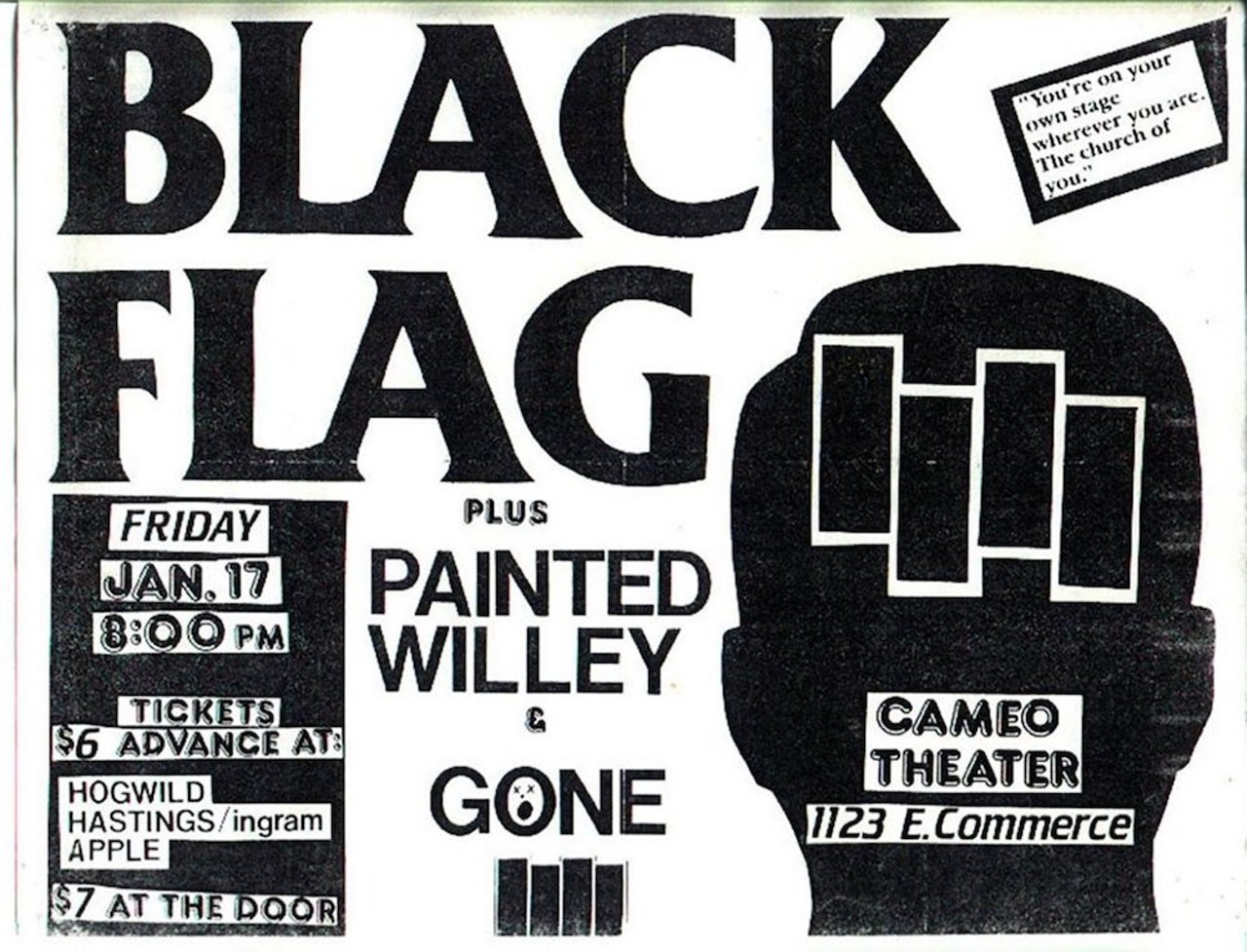
San Antonio, Texas Punk Rock Archive
Cameo Theater
The Cameo’s place in history was cemented when Metallica sold out the venue four nights in a row on the then-young and hungry band’s first national tour. However, the art-deco theater in St. Paul Square hosted plenty of other cool touring bands during its ’80s and ’90s heyday.
The Cameo’s place in history was cemented when Metallica sold out the venue four nights in a row on the then-young and hungry band’s first national tour. However, the art-deco theater in St. Paul Square hosted plenty of other cool touring bands during its ’80s and ’90s heyday.
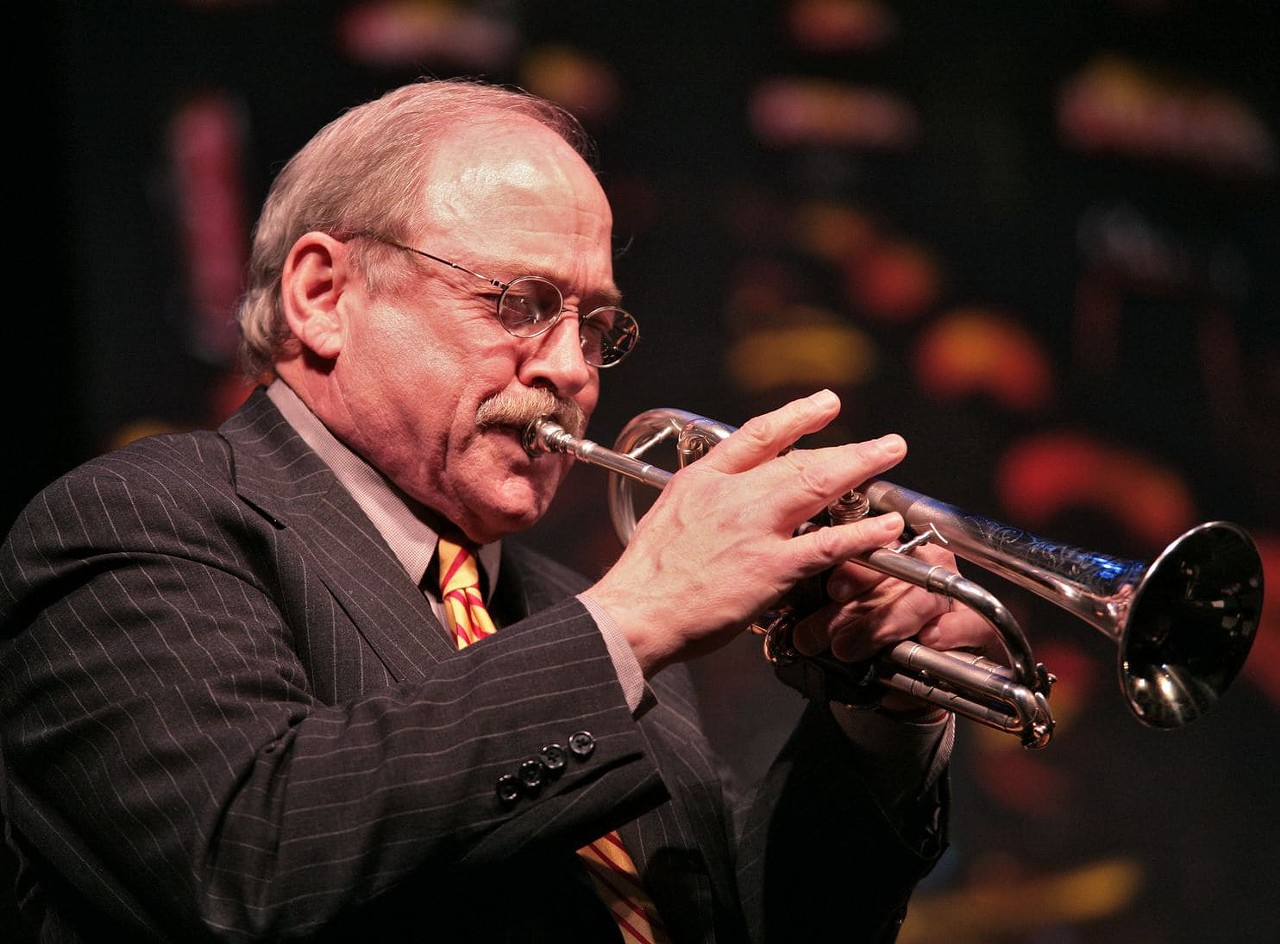
Jeff Salzgeber
The Landing Jazz Club
The late coronet whiz Jim Cullum Jr. ran this longtime club dedicated to keeping the swinging sounds of Dixieland jazz alive. Considered the River Walk’s first nightclub, the site also hosted a radio show called Riverwalk Jazz, which was carried on public radio stations around the country.
The late coronet whiz Jim Cullum Jr. ran this longtime club dedicated to keeping the swinging sounds of Dixieland jazz alive. Considered the River Walk’s first nightclub, the site also hosted a radio show called Riverwalk Jazz, which was carried on public radio stations around the country.
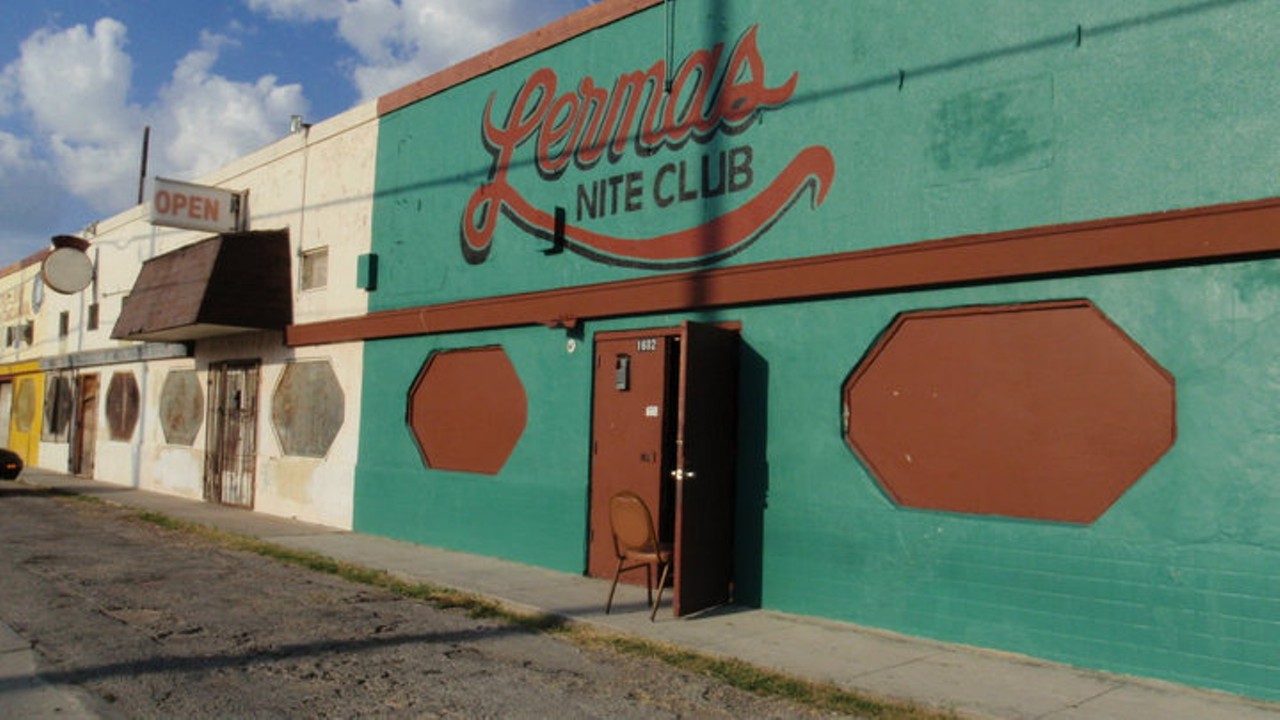
Facebook / Lerma's Nite Club
Lerma’s Nite Club
Fans of conjunto music flocked to Lerma’s to take in the accordion-driven sounds of the South Texas musical form from shortly after World War II until its 2010 closure. The Esperanza Peace and Justice Center oversaw the restoration of Lerma’s, which has since reopened as community gathering place.
Fans of conjunto music flocked to Lerma’s to take in the accordion-driven sounds of the South Texas musical form from shortly after World War II until its 2010 closure. The Esperanza Peace and Justice Center oversaw the restoration of Lerma’s, which has since reopened as community gathering place.
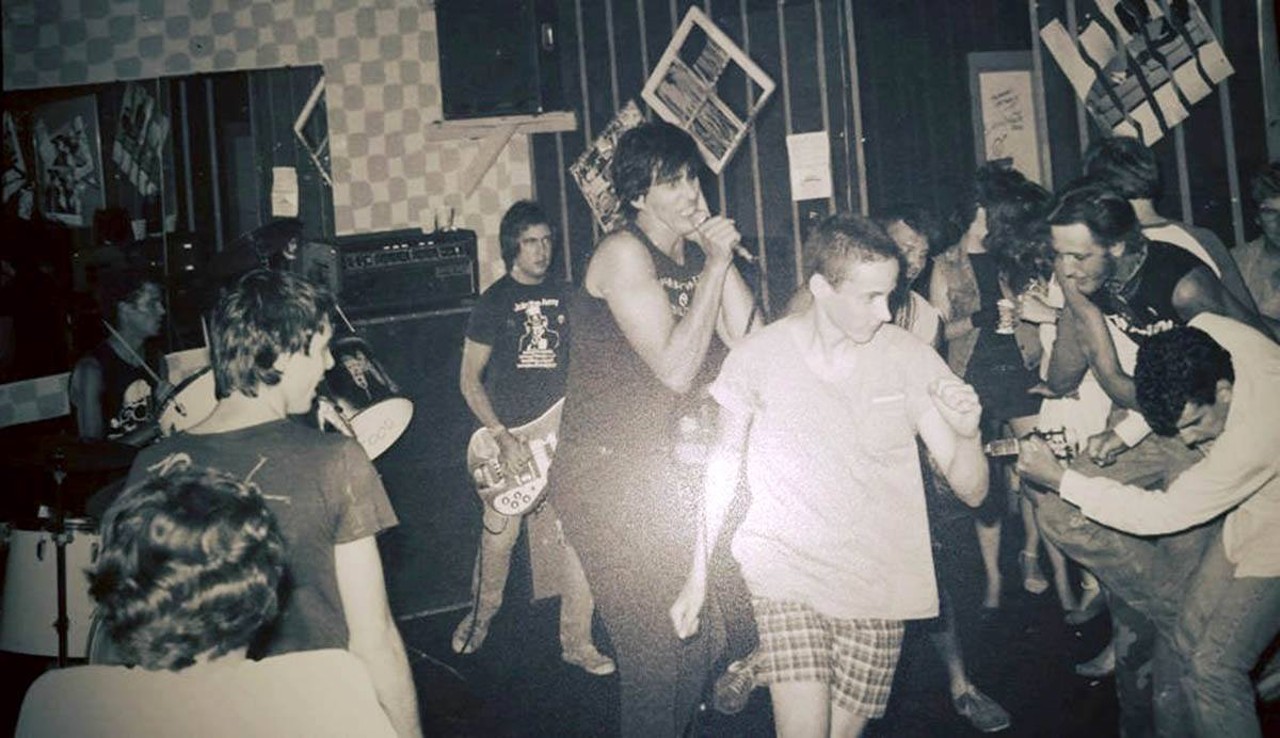
Facebook / San Antonio, Texas Punk Rock Archive (Photo: Kathleen Toudouze)
Raw Power & Light
Some locals consider the short-lived Raw Power the first punk rock venue in San Antonio. It played host to chaotic and now legendary performances by bands including hometown weirdos the Butthole Surfers. Pictured here: the Mystery Dates playing Raw Power in 1984.
Some locals consider the short-lived Raw Power the first punk rock venue in San Antonio. It played host to chaotic and now legendary performances by bands including hometown weirdos the Butthole Surfers. Pictured here: the Mystery Dates playing Raw Power in 1984.
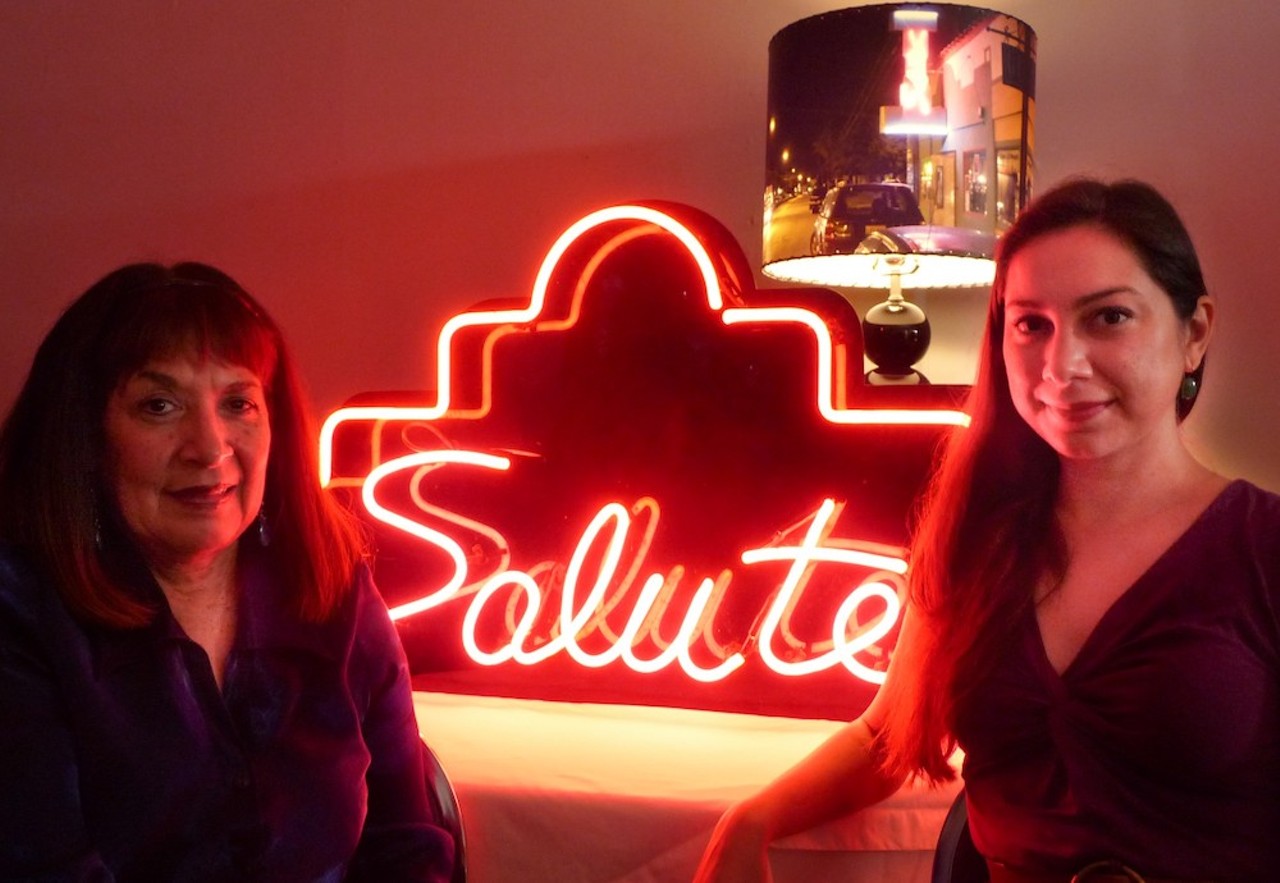
Jeffrey Wright
Saluté
Although conjunto and other Latin music were the mainstays at this colorful venue that outlasted the early ’90s decline of the St. Mary’s Strip, it eventually opened up to booking punk, garage rock and other styles. The spot was cool, classy and always attracted a diverse crowd.
Although conjunto and other Latin music were the mainstays at this colorful venue that outlasted the early ’90s decline of the St. Mary’s Strip, it eventually opened up to booking punk, garage rock and other styles. The spot was cool, classy and always attracted a diverse crowd.
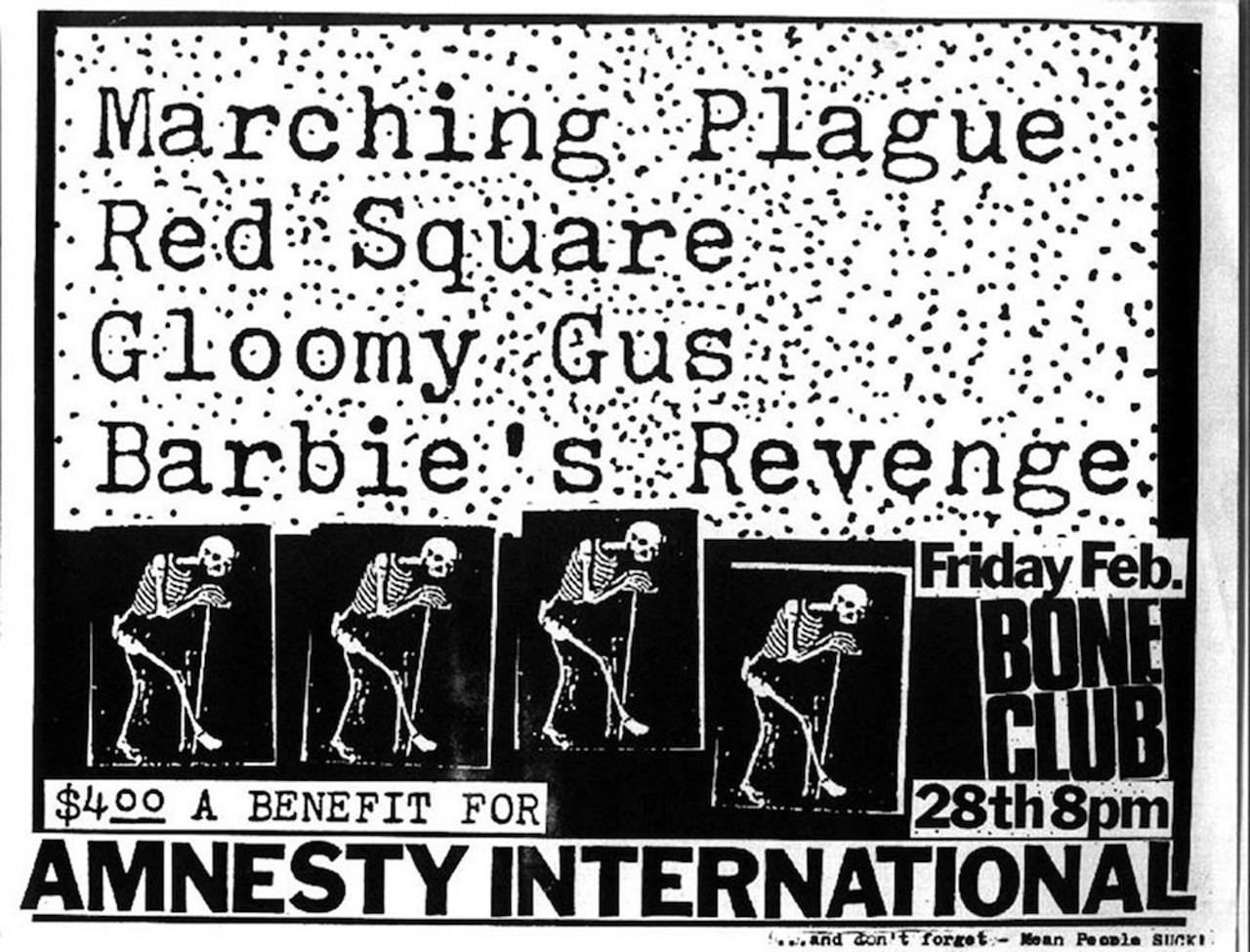
San Antonio, Texas Punk Rock Archive
The Bone Club
This offbeat north-of-downtown club place became the epicenter for San Antonio’s explosive ’80s punk rock scene. Its closure left a big void for years to come.
This offbeat north-of-downtown club place became the epicenter for San Antonio’s explosive ’80s punk rock scene. Its closure left a big void for years to come.
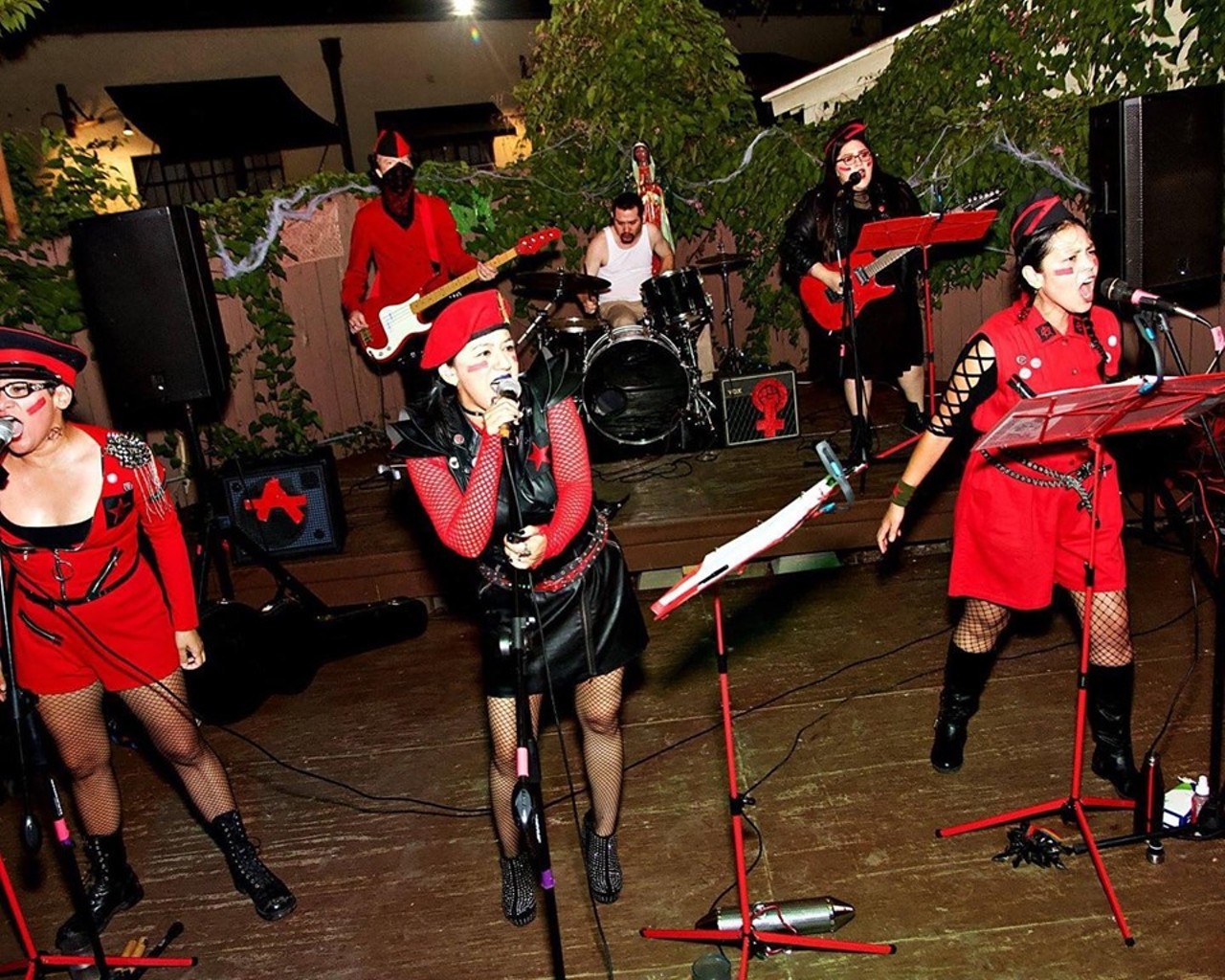
Instagram / @pray.4rain
La Botanica
This queer, feminist vegan eatery and community gathering space was also the venue for some forward-thinking events during the 2010s, including drag shows and Chicana punk festivals. Pictured here: The Canción Cannibal Cabaret performing at Black and Brown Punk Fest TX 2018
This queer, feminist vegan eatery and community gathering space was also the venue for some forward-thinking events during the 2010s, including drag shows and Chicana punk festivals. Pictured here: The Canción Cannibal Cabaret performing at Black and Brown Punk Fest TX 2018
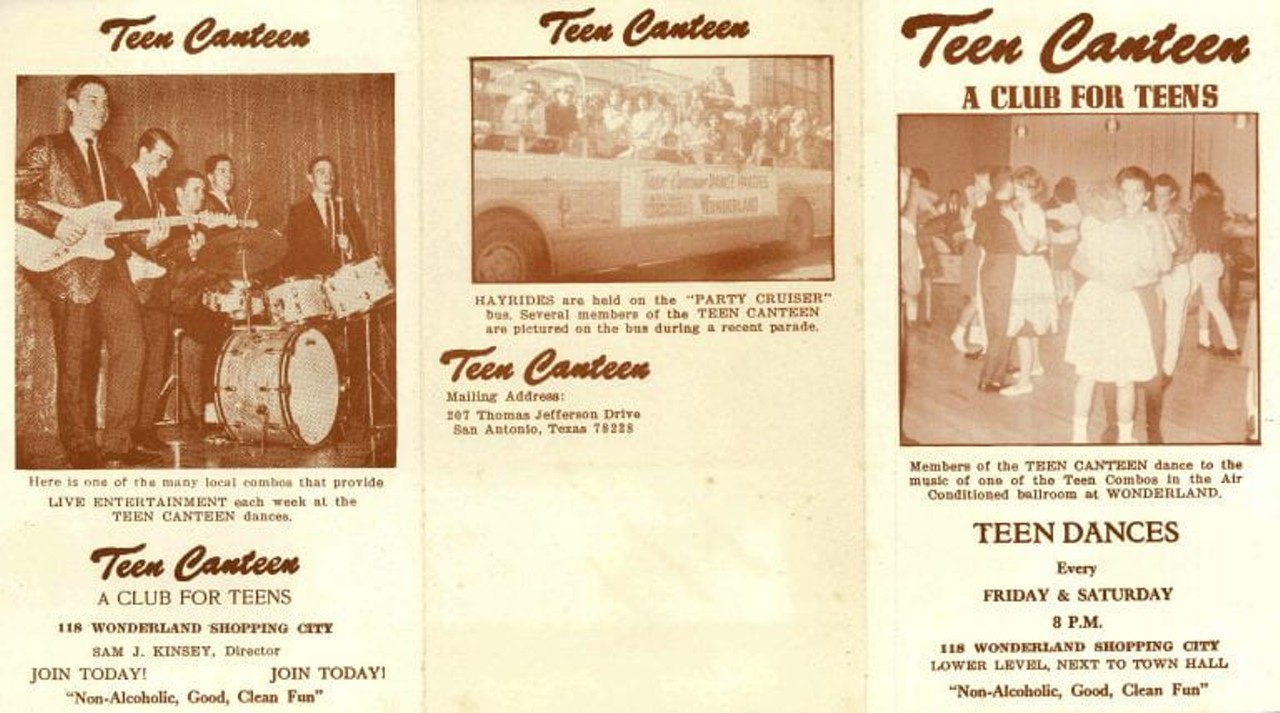
Texas State University, The Wittliff Collections
Teen Canteen
A teenie-bopper venue in the ’60s and ’70s with hilariously strict signage — blue jeans and shorts were NOT allowed, at least initially — the Teen Canteen was known as a place kids could “swing, bop, and stay out of trouble.” Young people even needed to have their parents’ permission to attend Teen Canteen shows, according to Texas State University. Nonetheless, major rock acts of the day played there, including ZZ Top and Sir Douglas Quintet.
A teenie-bopper venue in the ’60s and ’70s with hilariously strict signage — blue jeans and shorts were NOT allowed, at least initially — the Teen Canteen was known as a place kids could “swing, bop, and stay out of trouble.” Young people even needed to have their parents’ permission to attend Teen Canteen shows, according to Texas State University. Nonetheless, major rock acts of the day played there, including ZZ Top and Sir Douglas Quintet.
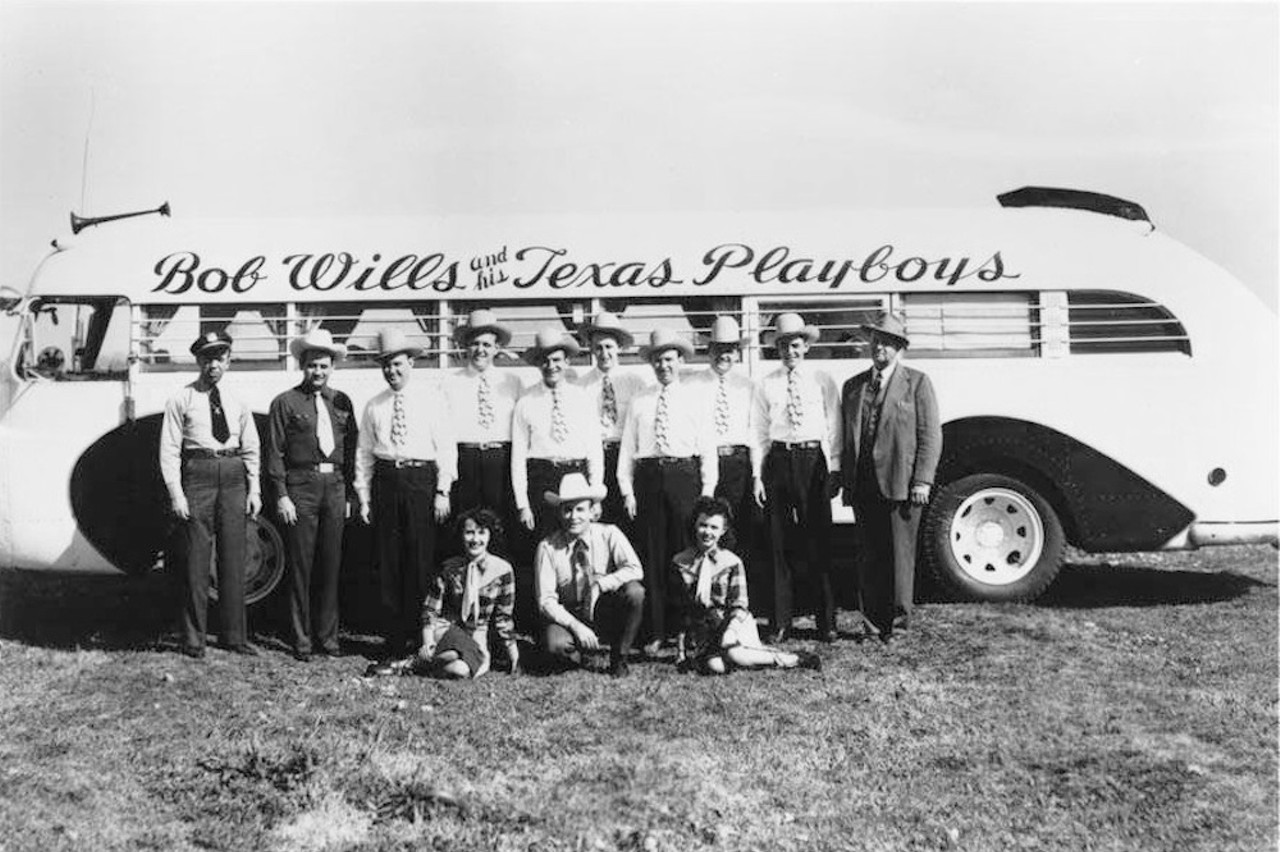
Public Domain / Bob Wills & the Texas Playboys publicity photo
Farmer’s Daughter
“In country music, the way you tell if you’re going over is if the dancefloor is full,” longtime San Antonio music writer Jim Beal once said of the Farmer’s Daughter, a long-running country music dance hall on W.W. White Road. “The Farmer’s Daughter, that was hardcore Bob Wills-type stuff. It was my favorite spot. The dancing was incredible there, and it was all ages.” In fact, Bob Wills and his Texas Playboys were the first band to play the spot, followed by other greats including Merle Haggard, George Jones, Loretta Lynn, Buck Owens, Hank Thompson, and Ernest Tubb.
“In country music, the way you tell if you’re going over is if the dancefloor is full,” longtime San Antonio music writer Jim Beal once said of the Farmer’s Daughter, a long-running country music dance hall on W.W. White Road. “The Farmer’s Daughter, that was hardcore Bob Wills-type stuff. It was my favorite spot. The dancing was incredible there, and it was all ages.” In fact, Bob Wills and his Texas Playboys were the first band to play the spot, followed by other greats including Merle Haggard, George Jones, Loretta Lynn, Buck Owens, Hank Thompson, and Ernest Tubb.
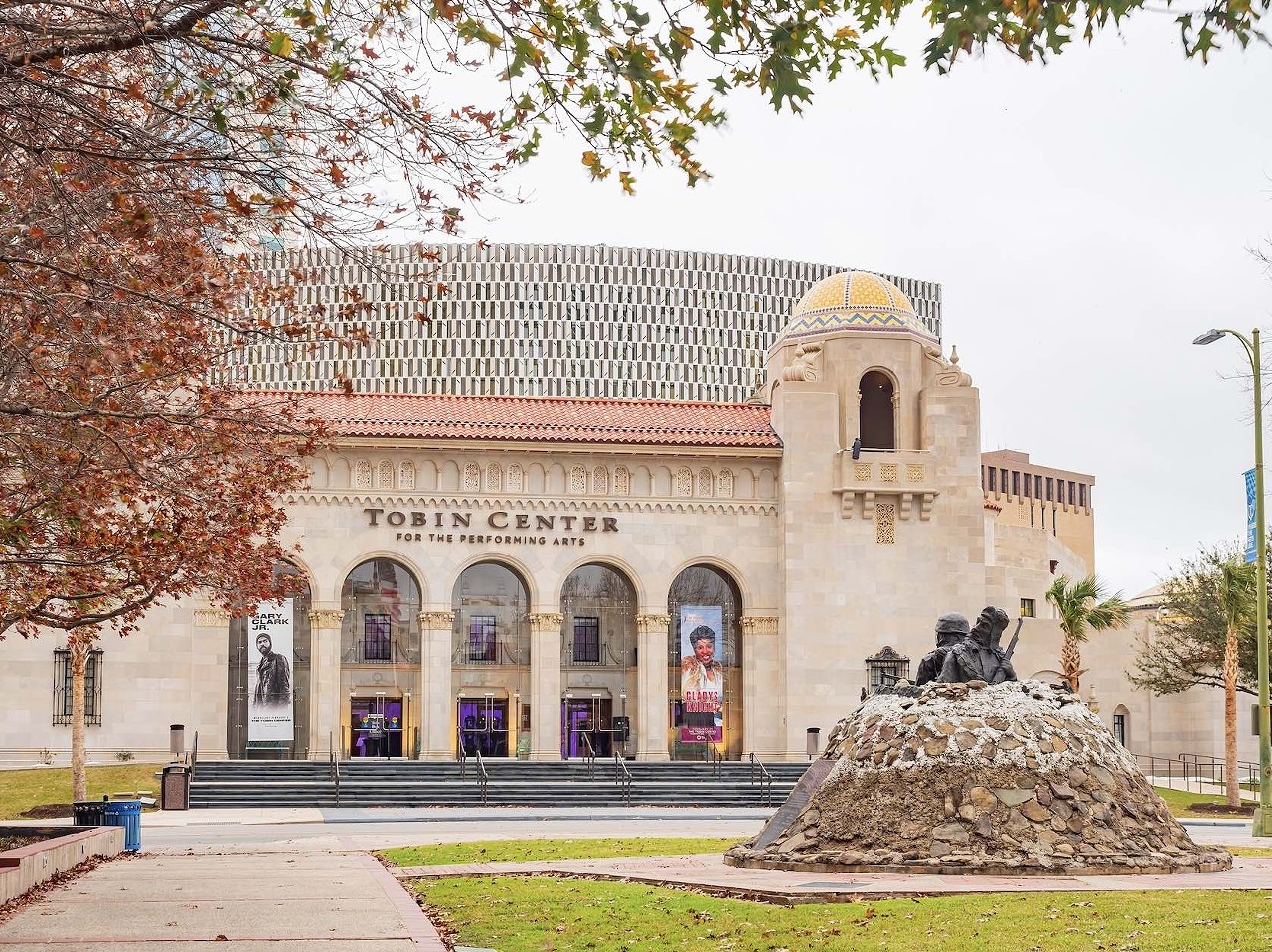
Shutterstock / Kit Leong
Municipal Auditorium
This building designed by legendary architect Atlee Ayres was later rebuilt and expanded to become the Tobin Center. Legendary acts that played at the Municipal included Linda Rondstadt, Aretha Franklin, Tony Bennett, Merle Haggard, Paul Simon, Bob Dylan, Emmylou Harris, Jimi Hendrix, Yes, Led Zeppelin, The Beach Boys, Black Sabbath, Elton John and Elvis Presley.
This building designed by legendary architect Atlee Ayres was later rebuilt and expanded to become the Tobin Center. Legendary acts that played at the Municipal included Linda Rondstadt, Aretha Franklin, Tony Bennett, Merle Haggard, Paul Simon, Bob Dylan, Emmylou Harris, Jimi Hendrix, Yes, Led Zeppelin, The Beach Boys, Black Sabbath, Elton John and Elvis Presley.
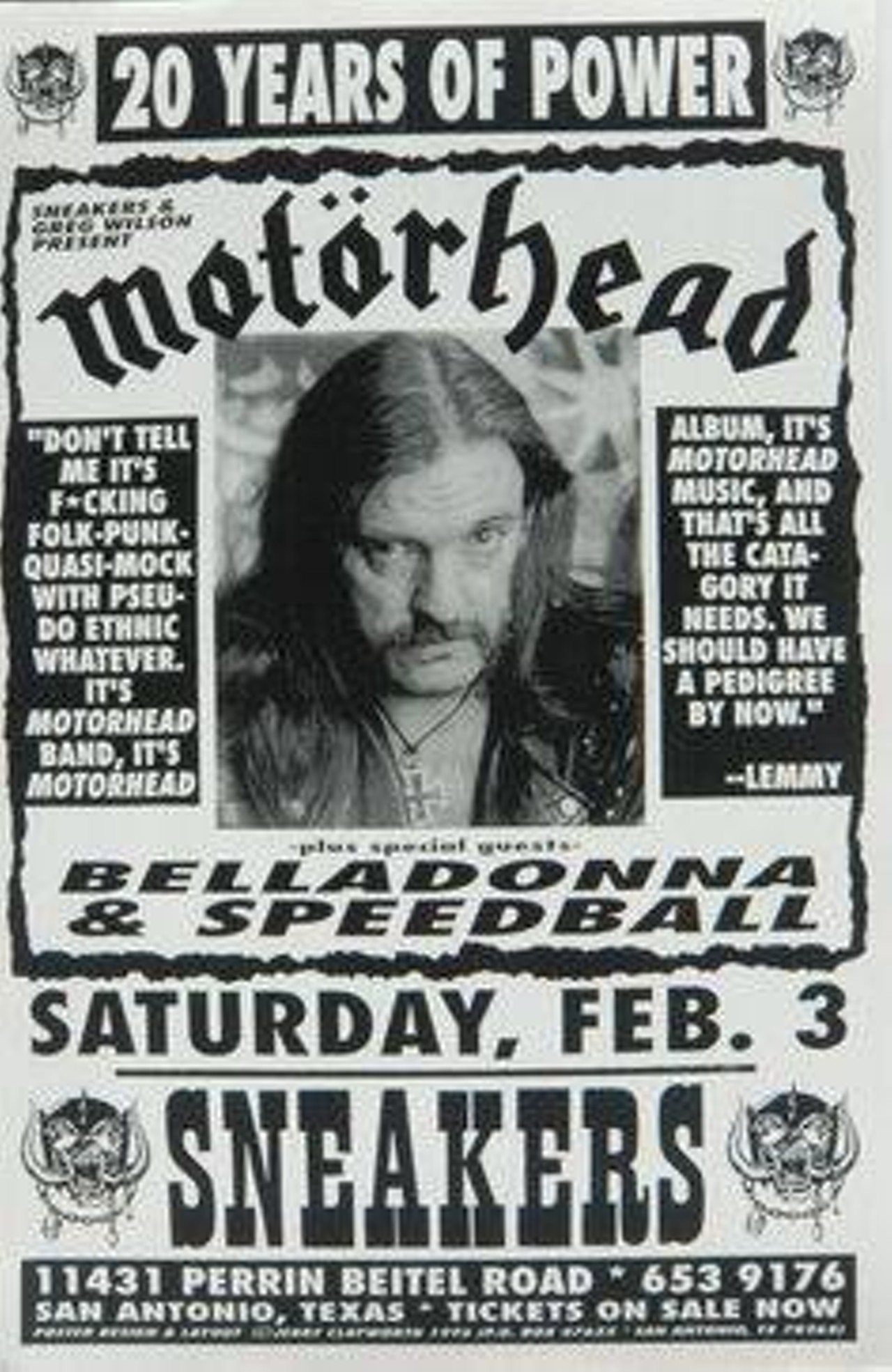
Facebook / Laurent Ram
Sneakers
We would be remiss if we failed to include Sneakers, which served as the hair metal mecca of San Antonio during the '80s and '90s. While the venue did cater to the hairspray and Spandex crowd, it also opened its stage to a more diverse array of rock acts that included Motorhead, Warren Zevon and even Jonathan Richman.
We would be remiss if we failed to include Sneakers, which served as the hair metal mecca of San Antonio during the '80s and '90s. While the venue did cater to the hairspray and Spandex crowd, it also opened its stage to a more diverse array of rock acts that included Motorhead, Warren Zevon and even Jonathan Richman.
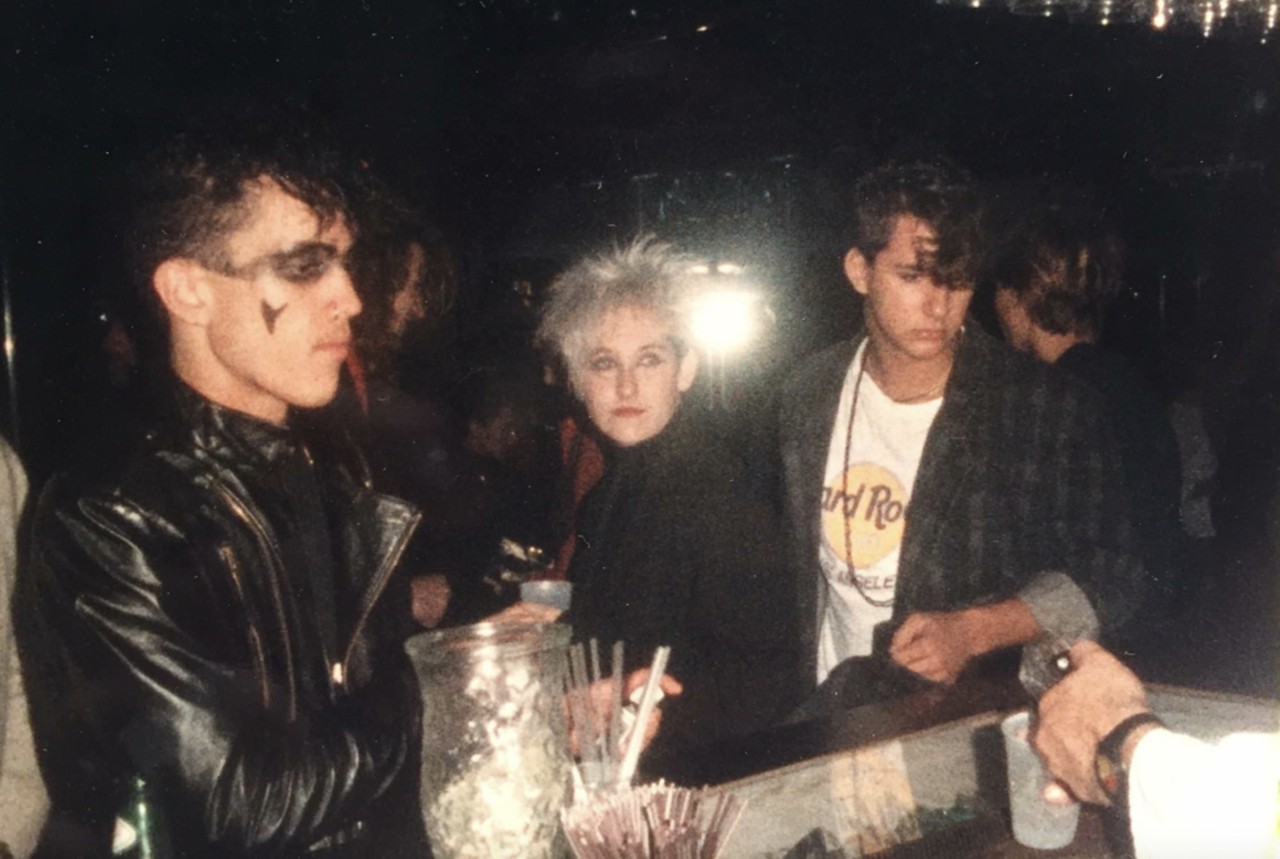
Courtesy Photo / David Milne
Phazez
This DJ-oriented club helped introduce the Alamo City to a variety of late ‘80s trends, including goth, post-punk, industrial music and underground hip-hop. Little surprise that periodic reunions organized around the now-defunct club continue to draw fans. Pictured here: Phazez patrons, left to right, David Goodall, Lanie Cathcart and Scott Grimmitt during a busy night.
This DJ-oriented club helped introduce the Alamo City to a variety of late ‘80s trends, including goth, post-punk, industrial music and underground hip-hop. Little surprise that periodic reunions organized around the now-defunct club continue to draw fans. Pictured here: Phazez patrons, left to right, David Goodall, Lanie Cathcart and Scott Grimmitt during a busy night.
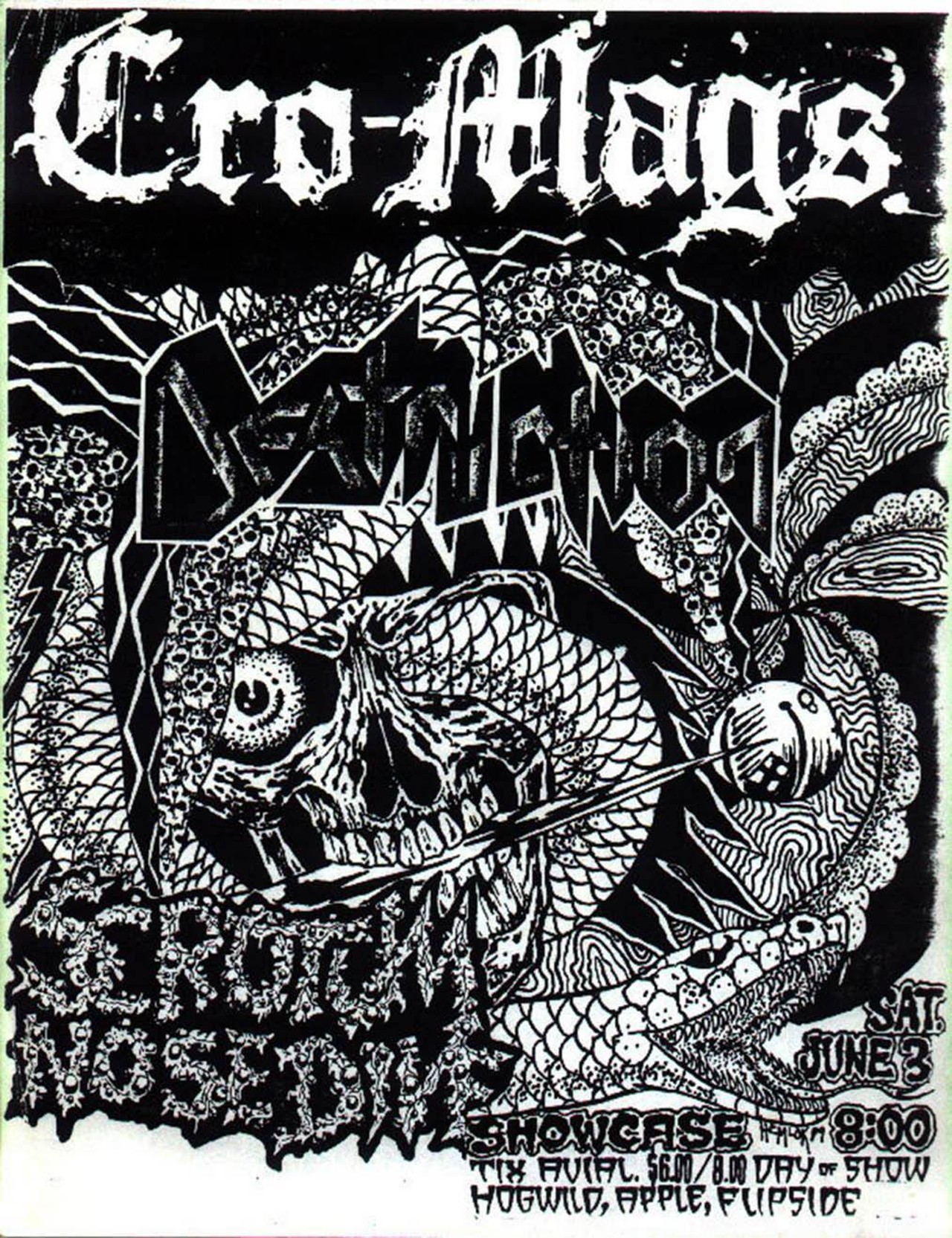
San Antonio, Texas, Punk Rock Archive
Showcase Special Events Center
Anyone from Los Lobos to Soundgarden to Napalm Death played this West Avenue strip-mall venue during the 1990s. While not as fancy as venues such as the Aztec Theatre, which now serve the same niche, it still boasted an amazing history.
Anyone from Los Lobos to Soundgarden to Napalm Death played this West Avenue strip-mall venue during the 1990s. While not as fancy as venues such as the Aztec Theatre, which now serve the same niche, it still boasted an amazing history.
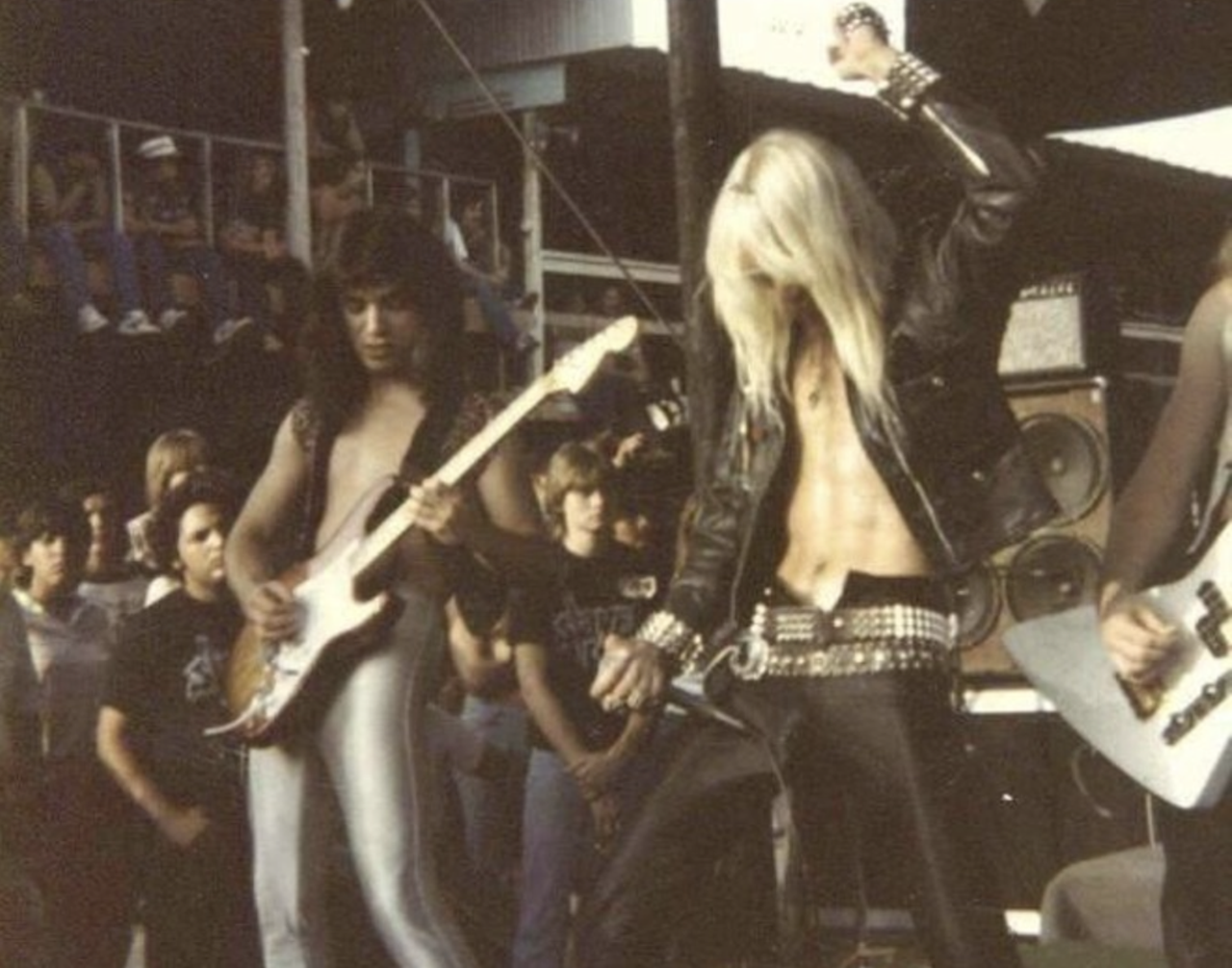
Courtesy Photo / Bob Catlin
Villa Fontana
Villa Fontana is known to local headbangers as the location of the legendary Slayer vs. Slayer concert that paired the like-named local act (pictured above) with the then-burgeoning thrash-metal heavyweights. However, it was a whole lot more. The space was known for a welcoming, all-ages vibe and diverse booking policy that ran the gamut from jazz to metal and back.
Villa Fontana is known to local headbangers as the location of the legendary Slayer vs. Slayer concert that paired the like-named local act (pictured above) with the then-burgeoning thrash-metal heavyweights. However, it was a whole lot more. The space was known for a welcoming, all-ages vibe and diverse booking policy that ran the gamut from jazz to metal and back.
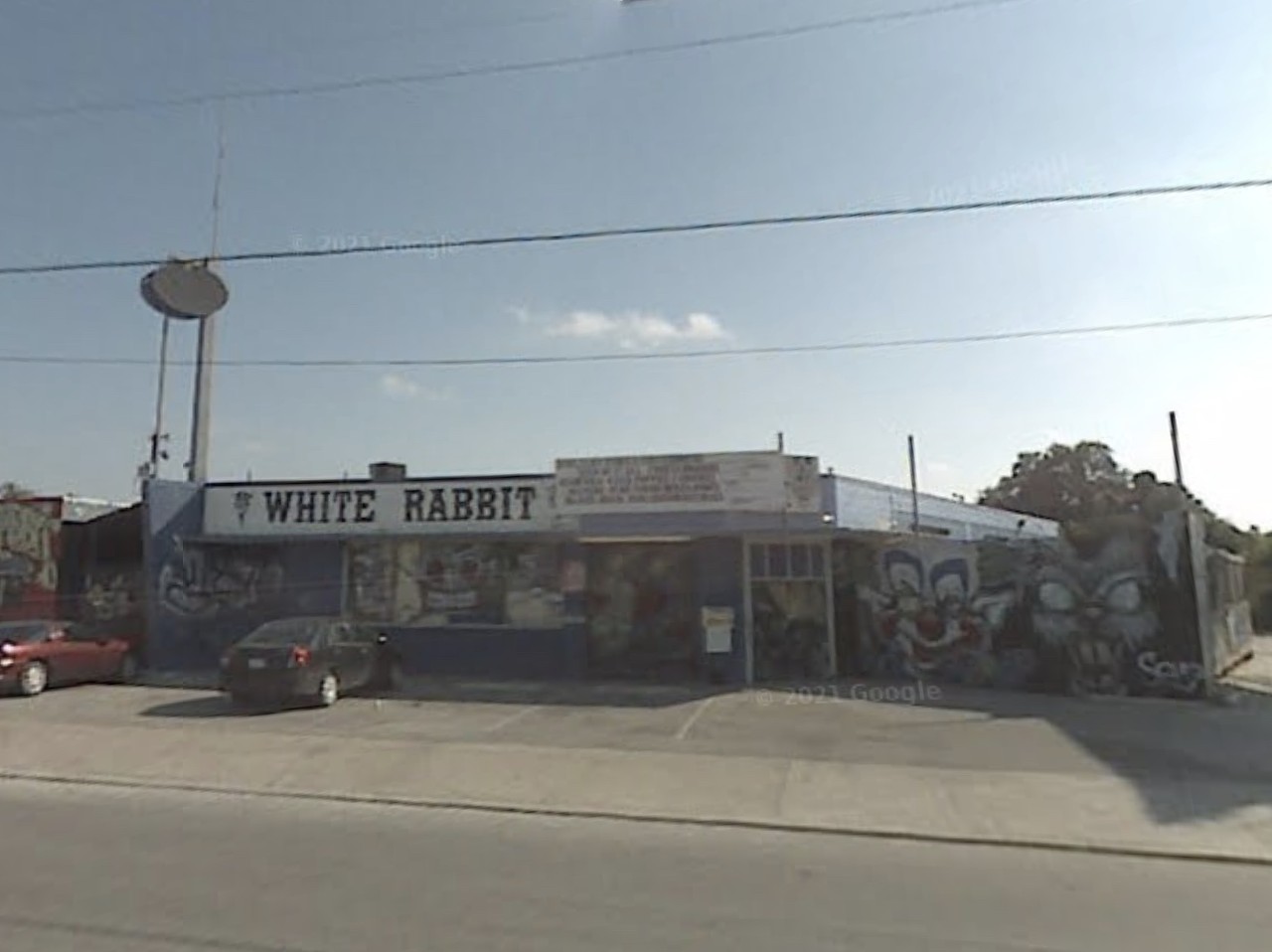
Photo via Google Maps
White Rabbit
Much like Paper Tiger, its successor on the St. Mary's Strip, the White Rabbit was a club where local bands could open for nationally touring acts that had outgrown small clubs but weren’t yet playing concert halls. Bands that played there included Primus, They Might Be Giants, The Melvins, Henry Rollins, Wayne Kramer and more.
Much like Paper Tiger, its successor on the St. Mary's Strip, the White Rabbit was a club where local bands could open for nationally touring acts that had outgrown small clubs but weren’t yet playing concert halls. Bands that played there included Primus, They Might Be Giants, The Melvins, Henry Rollins, Wayne Kramer and more.
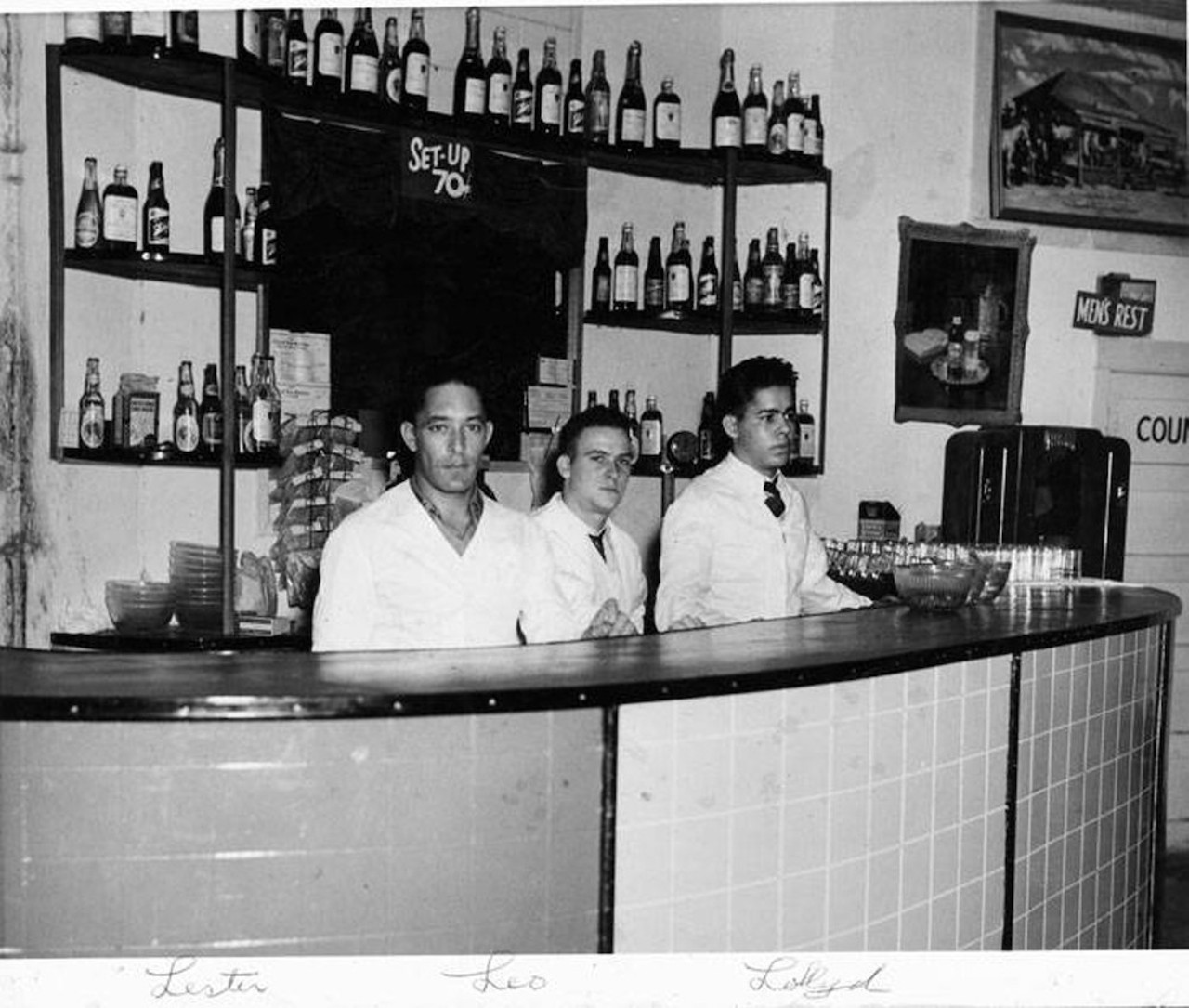
UTSA Special Collections
Keyhole Club
Louisiana native and jazz trumpeter Don Albert opened this East Side jazz gem in the 1940s, where it had the distinction of being SA’s first integrated nightclub. It featured giants of the day, including Sarah Vaughan, Louis Armstrong and Dizzy Gillespie. Pictured here: Don Albert and His Swing Orchestra on the bandstand.
Louisiana native and jazz trumpeter Don Albert opened this East Side jazz gem in the 1940s, where it had the distinction of being SA’s first integrated nightclub. It featured giants of the day, including Sarah Vaughan, Louis Armstrong and Dizzy Gillespie. Pictured here: Don Albert and His Swing Orchestra on the bandstand.
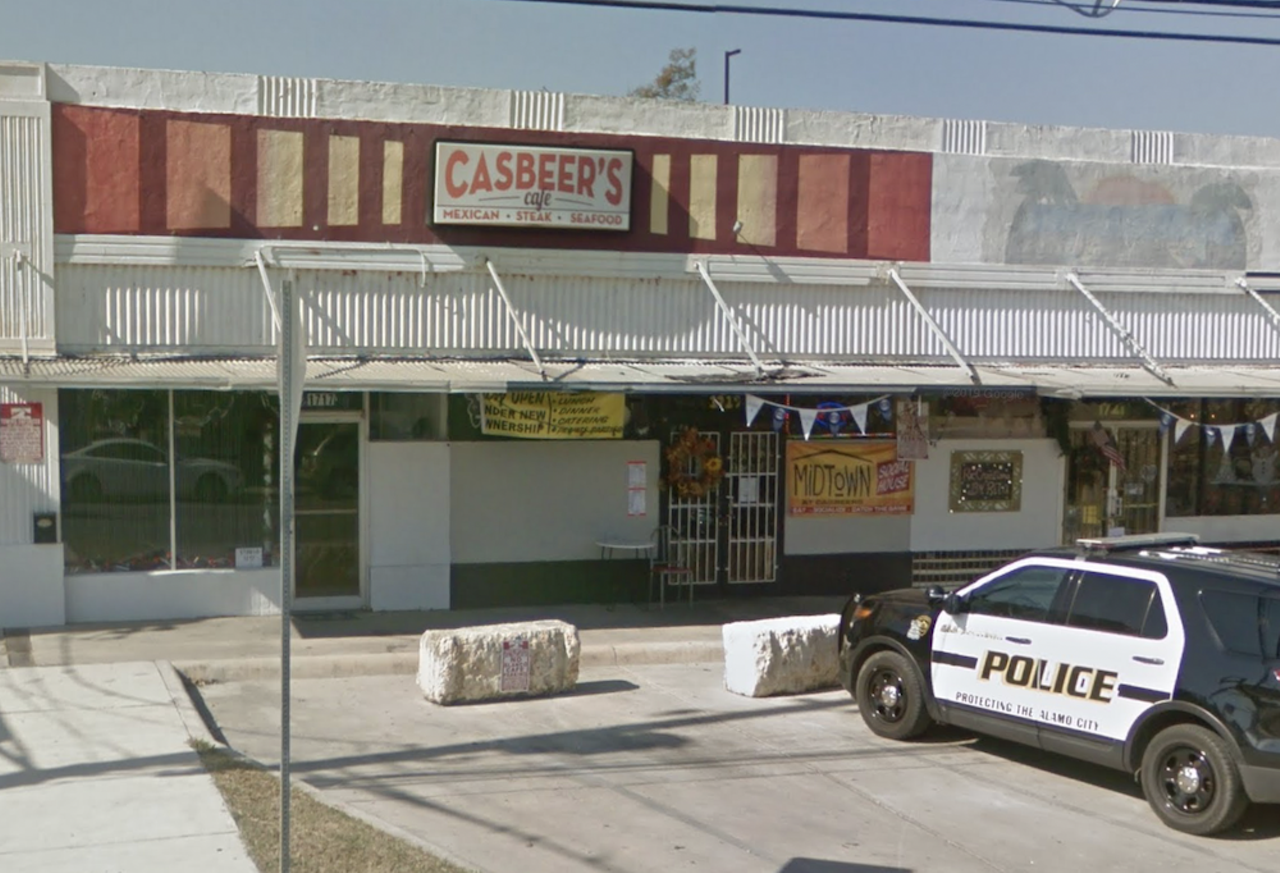
Screenshots / Google Maps
Casbeers Cafe & Cantina
This modest neighborhood bar in Midtown evolved into a great spot to catch local and touring Americana acts, from X frontman John Doe to Texas troubadour Wayne Hancock. The owners relocated the performance space to Southtown and rebranded it Casbeers at the Church in 2008. It shut down a few years later.
This modest neighborhood bar in Midtown evolved into a great spot to catch local and touring Americana acts, from X frontman John Doe to Texas troubadour Wayne Hancock. The owners relocated the performance space to Southtown and rebranded it Casbeers at the Church in 2008. It shut down a few years later.
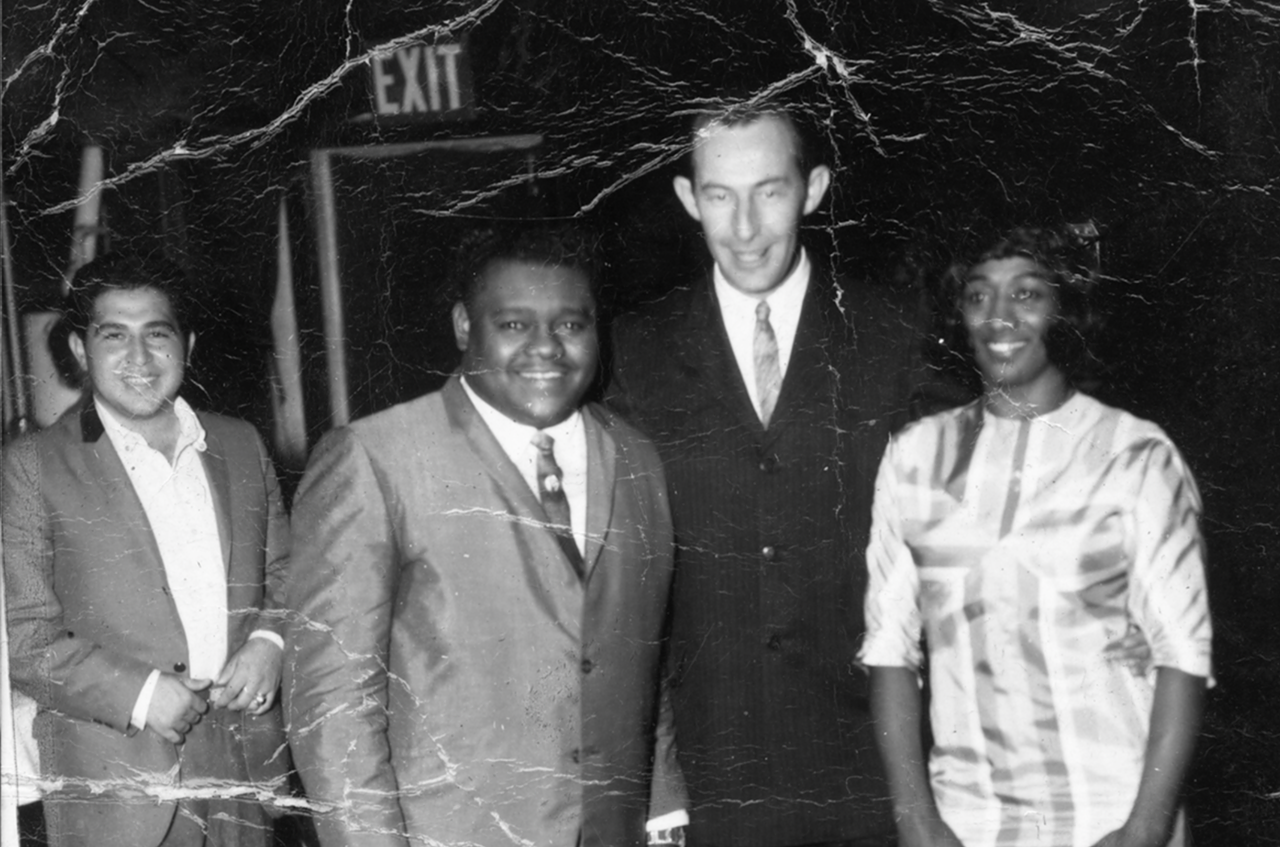
UTSA Special Collections
Eastwood Country Club
Located on St. Hedwig Road on SA’s East Side, the Eastwood, which opened in 1954, became a place where people of all races could mingle and take in acts active on the era’s “Chitlin’ Circuit.” Giants including Etta James, B.B. King and Ike & Tina Turner graced the stage before the club closed in the late 1970s. Pictured here: Fats Domino and dancer Fats Domino and Velma Patterson, also known as ''Miss Wiggles,'' meet with a fan at the Eastwood.
Located on St. Hedwig Road on SA’s East Side, the Eastwood, which opened in 1954, became a place where people of all races could mingle and take in acts active on the era’s “Chitlin’ Circuit.” Giants including Etta James, B.B. King and Ike & Tina Turner graced the stage before the club closed in the late 1970s. Pictured here: Fats Domino and dancer Fats Domino and Velma Patterson, also known as ''Miss Wiggles,'' meet with a fan at the Eastwood.







